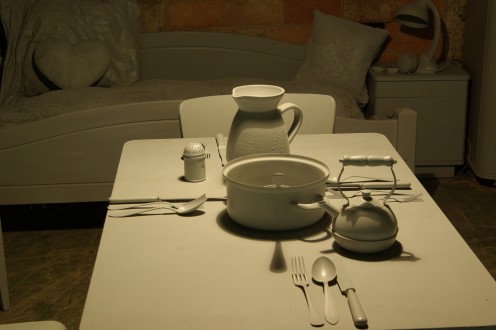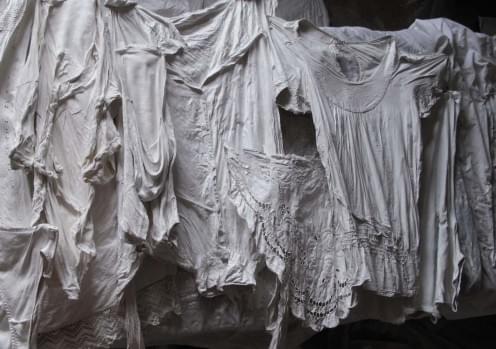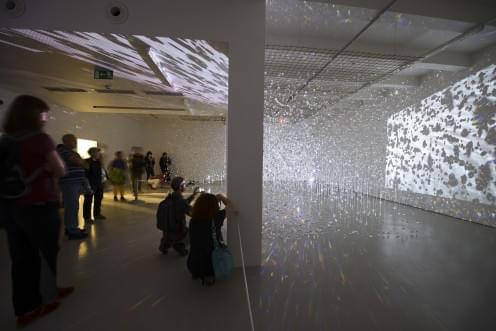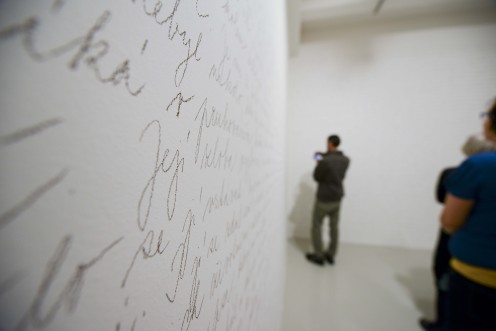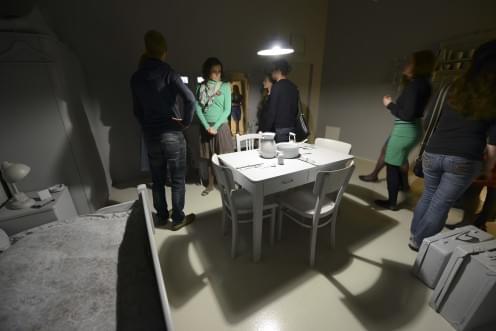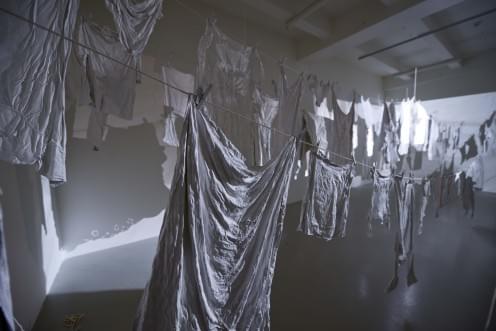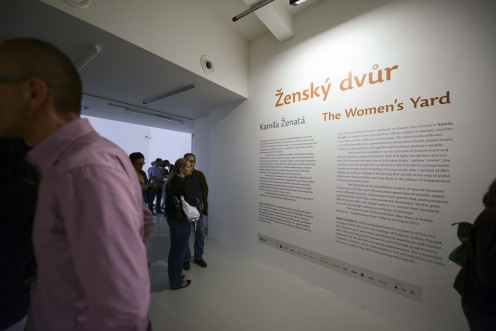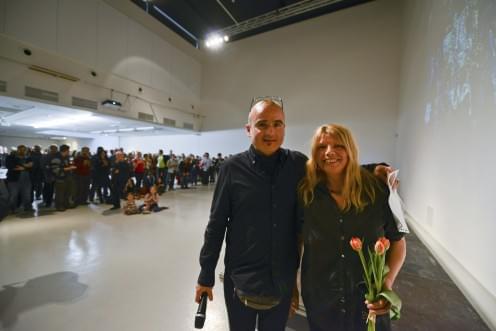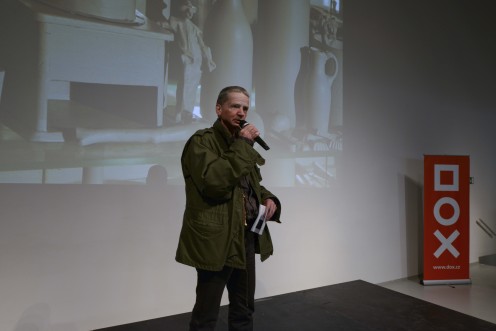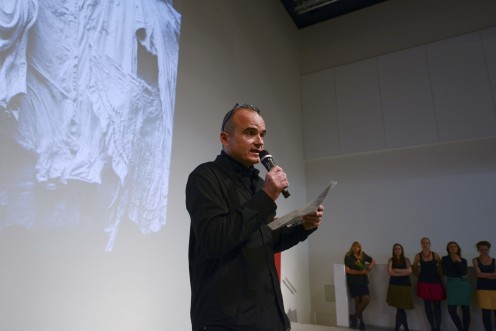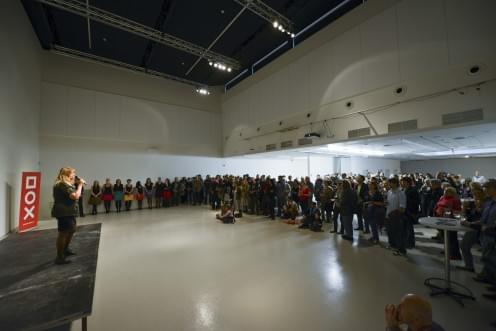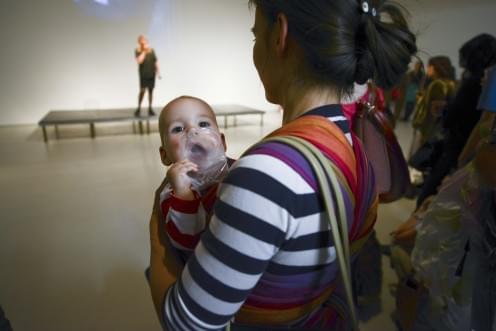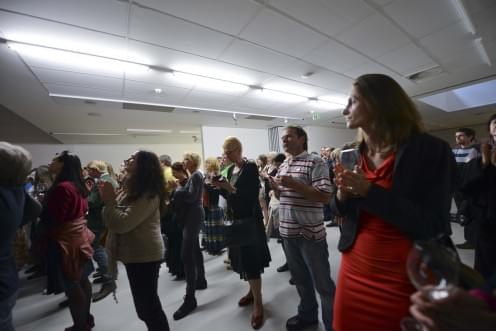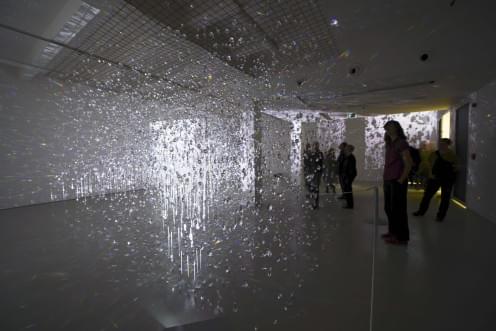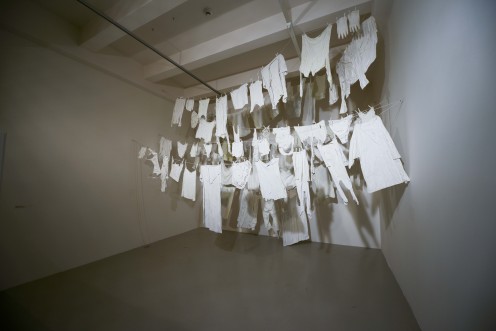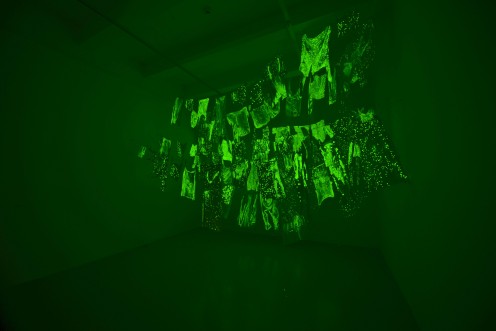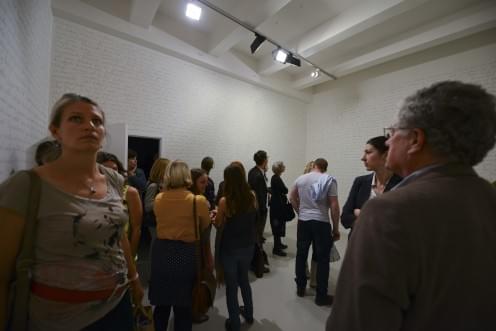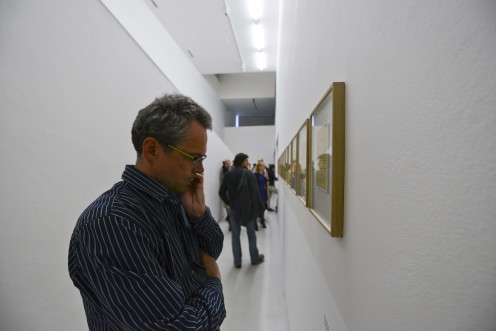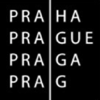Kamila Ženatá – The Women’s Yard
7 Jun – 26 Aug 2013
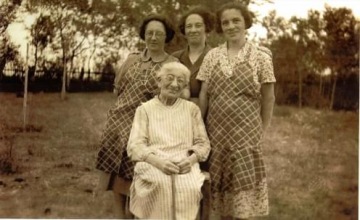
In her current double exhibition installed in Terezín’s Small Fortress (1 May – 26 Aug 2013) and at DOX (7 Jun – 26 Aug 2013), the “Advocate of Dreams and Emotions”, Kamila Ženatá, works with raw-sounding terms like trans-generational trauma transmission, displacement of pain or the rule of totalitarianism, all of them applied to the female world. The author, who became known on the Czech art scene through her comprehensive work with exhibition space and her emphasis on a non-transferable personal experience, does not then hesitate to go to the heart of the matter in realizing them.
The theme of the installation is woman and womanhood, and their uncompromising bonds to societal, social and familial conditions that impact human nature over the long term. Aside from her artistic activities, Kamila Ženatá has for many years led group psychotherapy and art therapy courses, and thus poses herself questions regarding our ability to transcend the chains of our own past: “My grandmother wore some shoes that wore down to some sort of shape over the course of her life’s journey, and quite certainly the shoes my mother wore were quite similar. And my shoes also cannot be from some completely different shop than the one in which the women that raised me shopped.”
Inside the Small Fortress of the Terezín Memorial as well as at the DOX Centre for Contemporary Art, she wagers on the visitor’s comprehensive emotional absorption. But she doesn’t guarantee it will be pleasant. The depersonalized monochromatic space full of pots, washed clothes and other items that we link to an idealized childhood and a domestic, safe perception of the world, comes across as strongly oppressive. The author uses other methods typical for her: an omnipresent audio-visual background, period documents and melding with the exhibition space, for example using inscriptions on walls.
Kamila Ženatá may draw on familial experiences, but in the Women’s Yard project, she generalizes and traces the thread of not only one specific story, but of many others as well. After all, trauma, severed connections and repressions that destroy our relationships are part of life in general. And generational syndromes are transferred from parents to children, accompanied by the formation of relational defensive mechanisms that the author calls “stone hearts”.
“Deliberation on whether it is at all possible to step off the path that is predestined, that you will continue even if this destiny isn’t apparent and clear, nevertheless somehow inevitable, because your ancestors gave you unconscious behaviour, their lives and their fates like threads with which you are bound, perhaps this is called trans-generations transmission. Prisoners of their own minds, is this still true? Imprisoned in the cells of their fates?”
(Kamila Ženatá)
Kamila Ženatá (1953) graduated from the Academy of Fine Arts in Prague (1973-79) under the tutelage of Professor Ladislav Čepelák. She garnered attention with her exhibition entitled Learn to Stand on One Foot at Mánes (2007), and is currently primarily working on video installations and exhibition projects. She participated in the 14 S exhibition at DOX (2009) not only as an artist, but also as a co-curator (with Milena Slavická). Kamila Ženatá’s work is characterized by versatility: she expresses herself through painting, photography, video and text. But her work has greatest force when it connects all these elements into one compact installation. Kamila Ženatá also writes and works in the field of psychoanalytic psychotherapy and art therapy, focusing on group events. She lives and works in Prague.
exhibition co-presented by: The Terezín Memorial
with the support of: Schrödingerova kočka, o. s.
2. 8. | 7pm
Things and Words: Art and Poetry as Two Creative Transformations of Trauma
A lecture by two world's leading psychoanalysts Leopold Nosek and Salman Akhtar who interconnect themes of psychoanalysis and art into the inseparable and significant unit.

